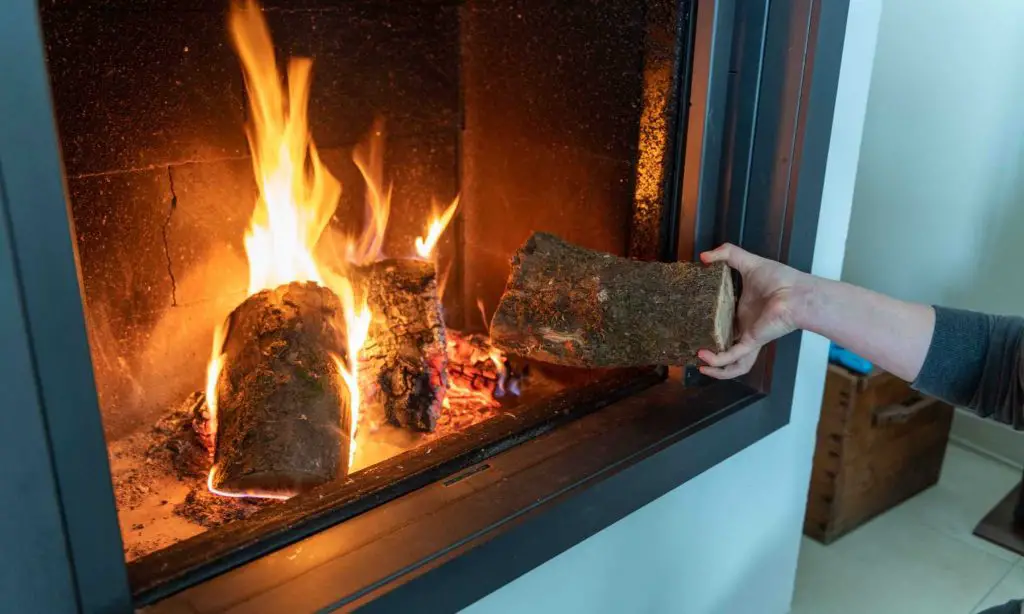A cozy fire in the fireplace can create a warm and inviting atmosphere in your home. However, the fire in the fireplace cannot burn forever; therefore it’s essential to know how to put out a fire in a fireplace safely and effectively.
In this comprehensive Home Centrale guide, we’ll discuss everything you need to know to extinguish a fire in your fireplace properly.
Why Is It Important To Know How To Put Out A Fire In A Fireplace?
Putting out a fire in a fireplace is crucial for several reasons. Firstly, it’s essential to prevent the fire from spreading beyond the fireplace and causing damage to your home. Secondly, it’s necessary to minimize the risk of injury and accidents caused by an uncontrolled fire.
When the fire in the fireplace isn’t put out correctly, it can result in the following:
- Smoke damage to your home
- Destruction of your chimney
- Spreading of embers or hot ashes outside the fireplace
- Injuries caused by burns or smoke inhalation
Therefore, knowing how to put out a fire in a fireplace safely is essential to protect your family and your home.
How To Put Out A Fire In A Fireplace: Step-By-Step Guide
Extinguishing a fire in a fireplace isn’t rocket science, but it’s essential to follow the proper steps to do it safely. Here are the steps to follow:
Step 1: Prepare the Fireplace
Before extinguishing the fire, it’s crucial to prepare the fireplace first. You’ll need a few items to make the process smoother and safer:
- Fireplace tools, such as a shovel, tongs, and poker
- A metal container, such as a bucket or ashtray
- Heat-resistant gloves or oven mitts
- A fire extinguisher (optional but recommended)
Once you’ve gathered these items, follow these steps to prepare the fireplace:
- Use the shovel or poker to move the logs around and break the larger pieces into smaller ones. This action will help the fire burn down more quickly and make it easier to extinguish.
- Use the tongs to remove any burning logs that are close to the edge of the fireplace and might fall out.
- Put on heat-resistant gloves or oven mitts to protect your hands from burns.
- Place the metal container close to the fireplace, so you can easily transfer the ashes and embers.
- Check that the damper is open before extinguishing the fire. This action will help to vent the smoke out of the house.
- If you have a fire extinguisher, have it ready in case of an emergency. It’s essential to know how to use a fire extinguisher beforehand.
Step 2: Reduce the Flame
Reducing the flame is an essential step in putting out a fire in a fireplace. It helps to decrease the heat generated by the fire and makes it easier to extinguish. Here’s how to do it:
- Use the poker to move the logs around and create a gap between them.
- Use the shovel or tongs to remove any loose ashes or debris around the fire.
- Sprinkle a generous amount of water over the fire to reduce the flames. Some people recommend using baking soda or salt instead of water, but water is the safest option.
- Allow the water to soak into the logs and ashes for a few minutes.
Step 3: Remove the Ashes and Embers
Once the flames have died down, it’s time to remove the ashes and embers from the fireplace. Here’s how to do it:
- Use the shovel to scoop the ashes and embers from the fireplace and transfer them to the metal container.
- Be careful not to knock any hot embers or ashes onto the floor or carpet.
- Once you’ve removed all the ashes and embers, you should be getting ready to dispose off the ashes.
Step 4: Dispose of the Ashes and Embers
Properly disposing off the ashes and embers is essential to prevent any fire hazards. Here are the steps to follow:
- Wait at least 24 hours to ensure that all the ashes and embers have cooled down completely.
- Find a safe and appropriate place to dispose off the ashes and embers. You can use a metal trash can or bury them in the garden.
- If you live in an apartment complex or a community with strict rules, check the regulations first before disposing of the ashes and embers.
- If you’re unsure of how to dispose of the ashes and embers, contact your local fire department for advice.
Step 5: Clean the Fireplace
After you’ve extinguished the fire and disposed of the ashes and embers, it’s time to clean the fireplace:
- Use the brush attachment on your vacuum cleaner to remove any loose ashes or debris from the fireplace.
- Use a damp cloth to wipe down the fireplace walls and floor. If there’s any stubborn soot or stains, you can use a specialized fireplace cleaner.
- Once you’ve cleaned the fireplace, dispose of the cloth or towel appropriately.

Tips for Putting Out a Fire in a Fireplace
Here are some tips to keep in mind when extinguishing a fire in a fireplace:
Tip 1: Don’t Use Water If There Is Gas Present
If your fireplace uses gas as fuel, you should never use water to put out the fire. Water can react with the gas and cause an explosion. Instead, turn off the gas supply and call a professional to handle the situation.
Tip 2: Always Check the Damper
Before lighting a fire in your fireplace, always check that the damper is open. An open damper ensures proper ventilation and prevents smoke from entering your home.
Tip 3: Keep a Fire Extinguisher Handy
It’s always a good idea to keep a fire extinguisher near your fireplace. Make sure to check the expiry date and ensure that everyone in the house knows how to use it.
Tip 4: Don’t Leave the Fire Unattended
Never leave a fire in your fireplace unattended. It’s essential to monitor the fire at all times and ensure that it’s put out correctly before leaving the room or going to bed. Fireplace monitors, screens, and fronts can help in this area to add more safety to your home.
As an extra precaution, you should install a fire/smoke detector or carbon-monoxide detection to help you detect when things go wrong.
Tip 5: Don’t Use Flammable Liquids
Don’t use any flammable liquids, such as gasoline or kerosene, to start or revive a fire in your fireplace. These liquids can cause a flash fire or explosion and put your home at risk.
Conclusion
Extinguishing a fire in a fireplace is a simple but crucial process that every homeowner should know. By following the steps in this guide and keeping the tips in mind, you can put out a fire in your fireplace safely and effectively, protecting yourself, your family, and your home.






